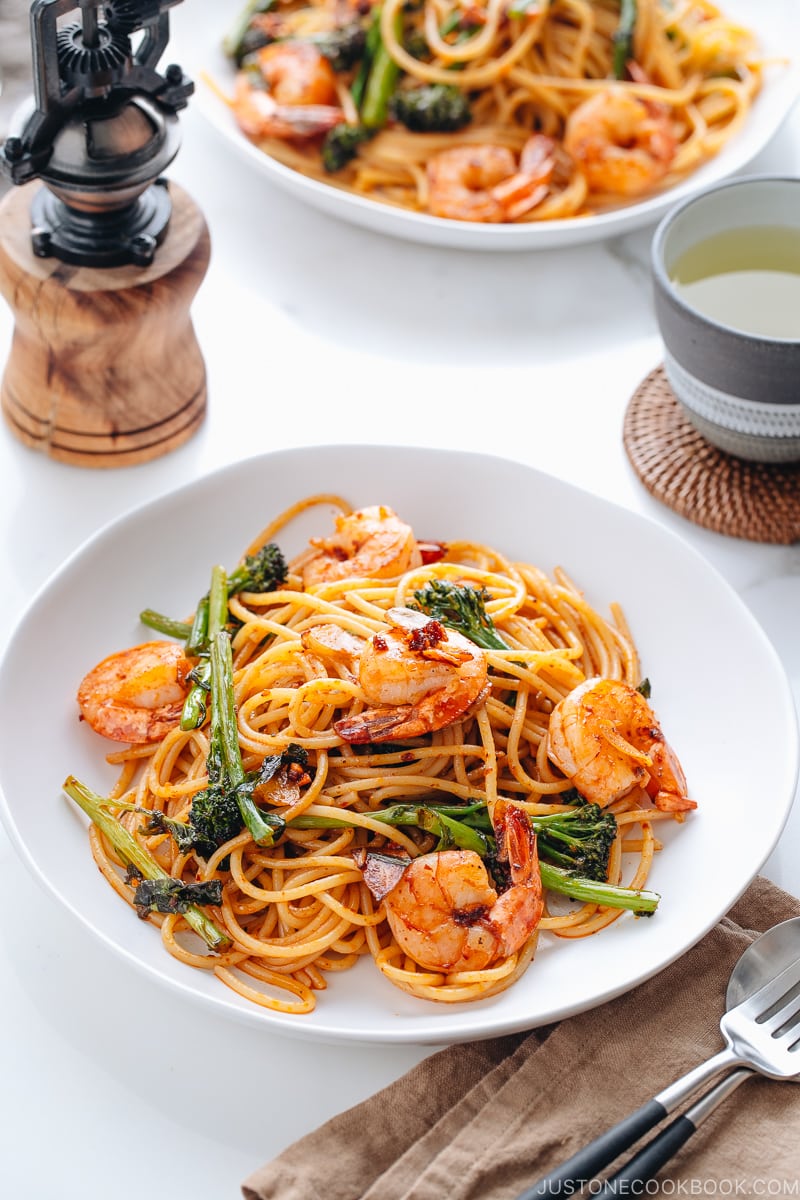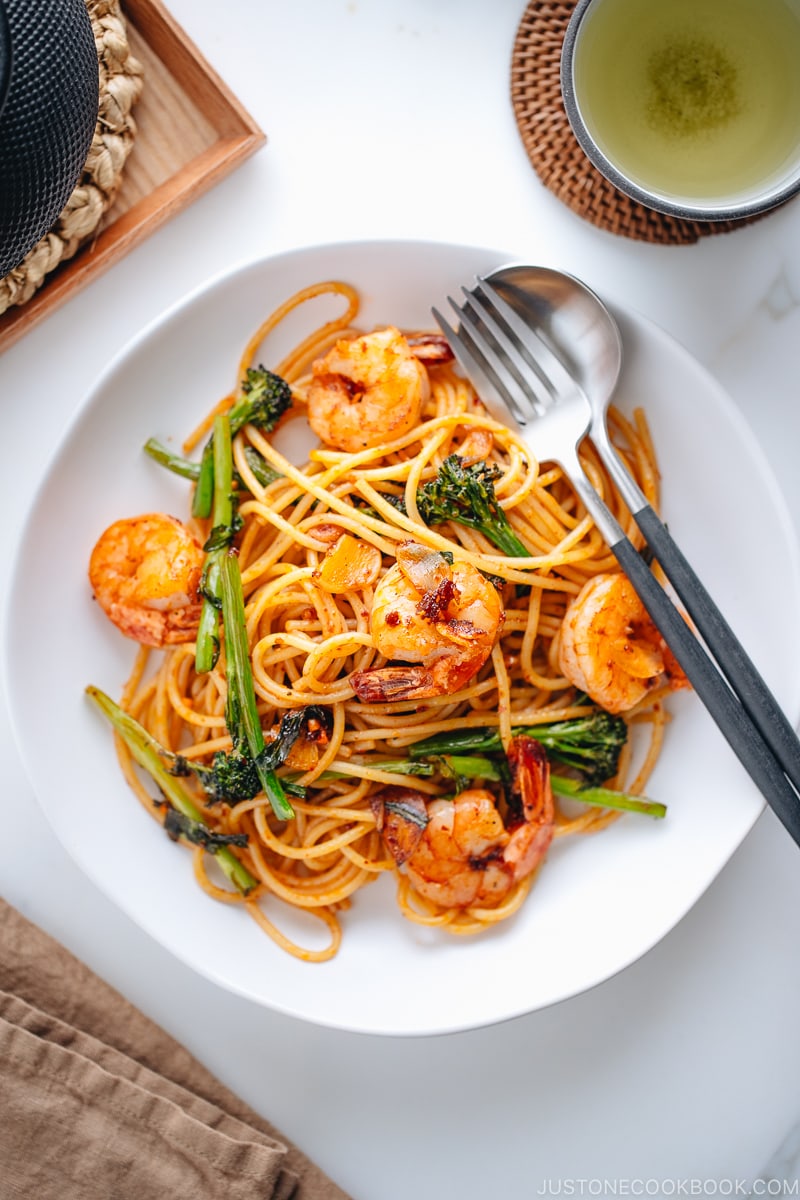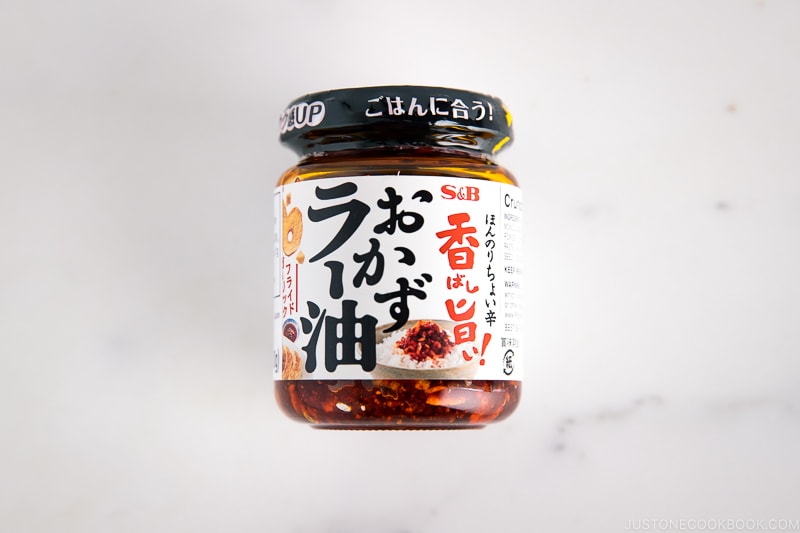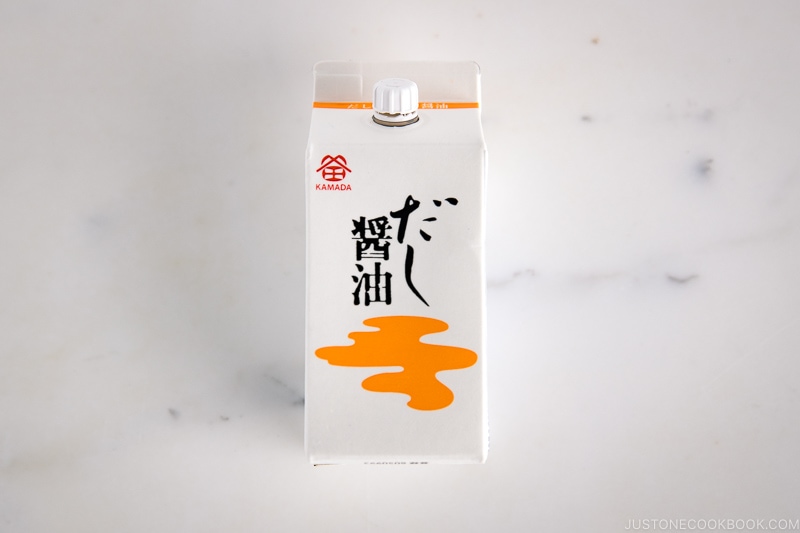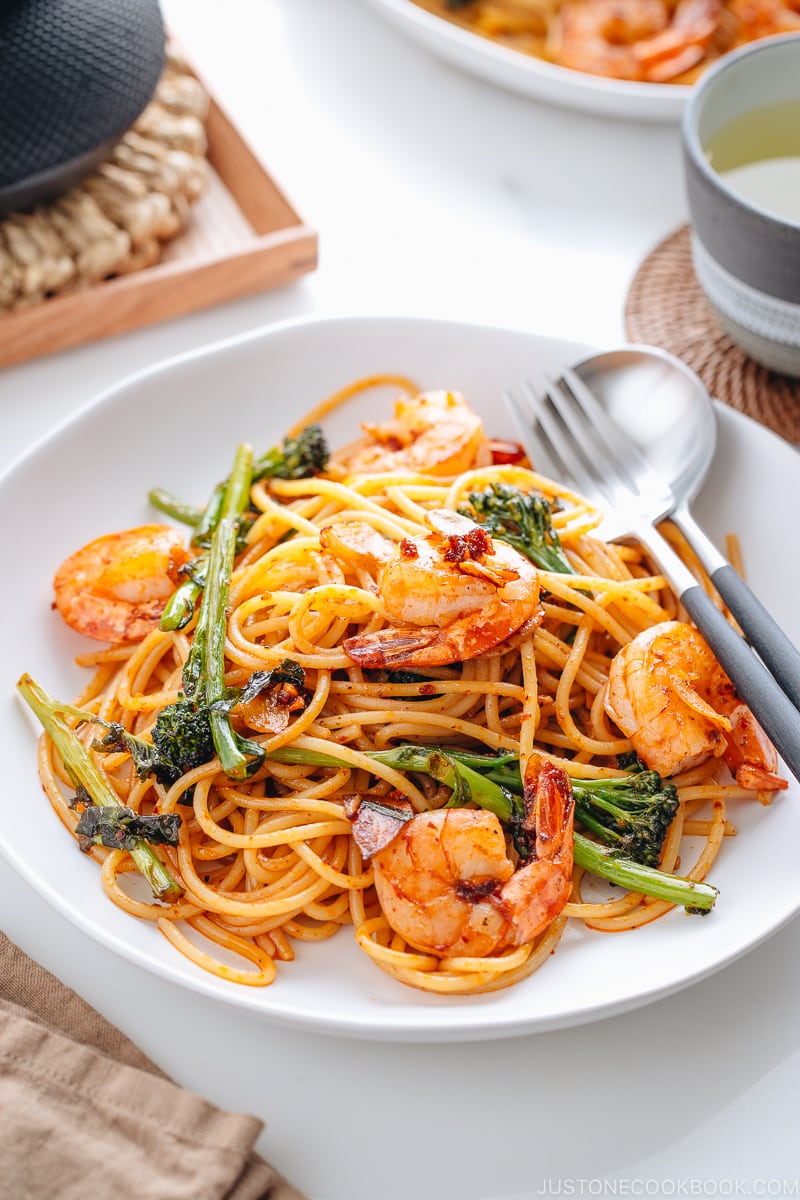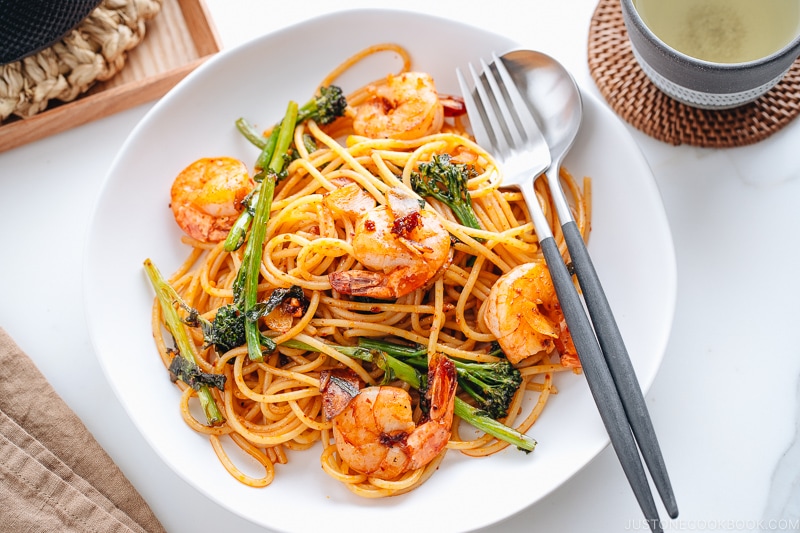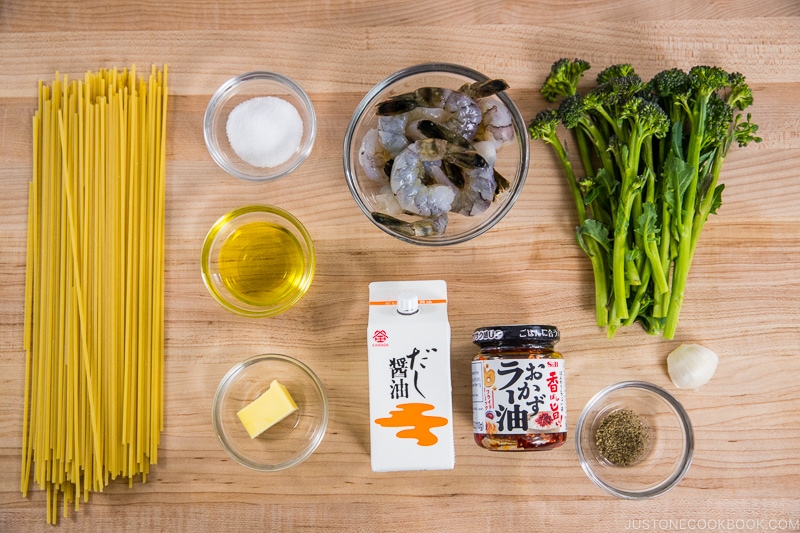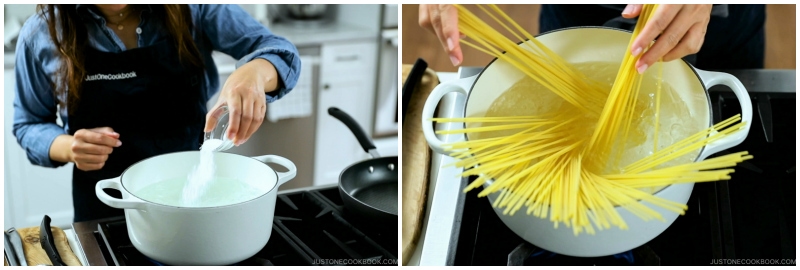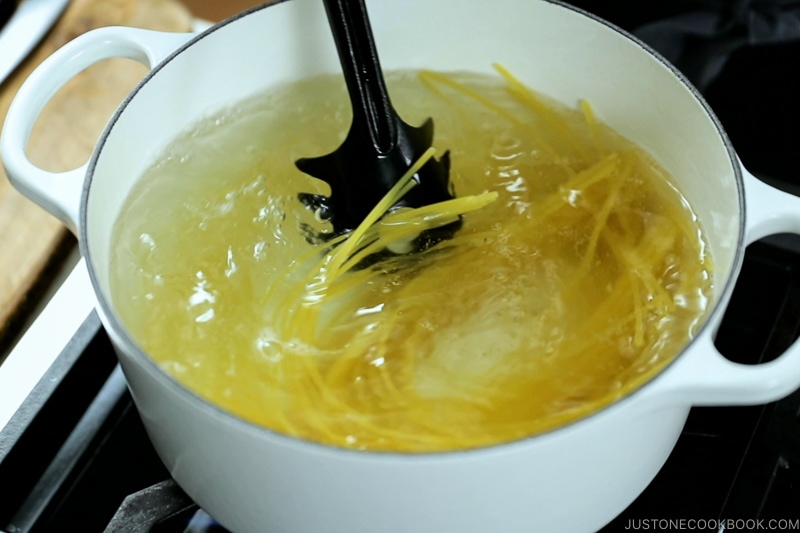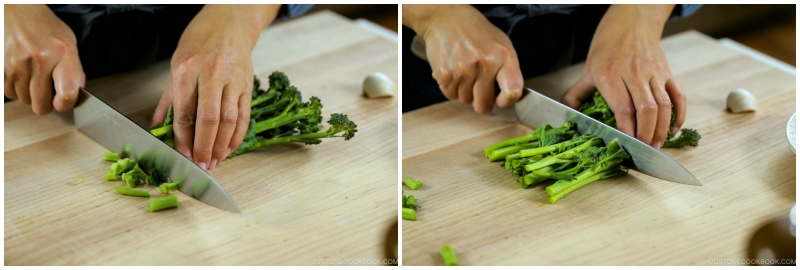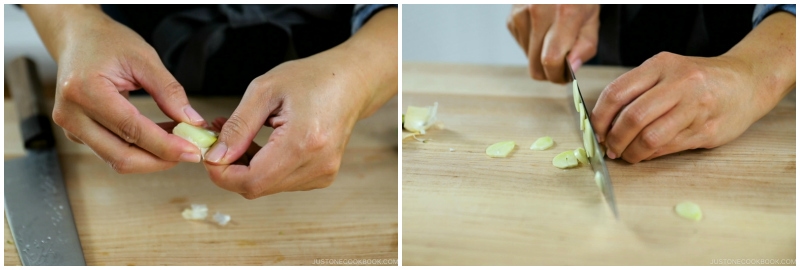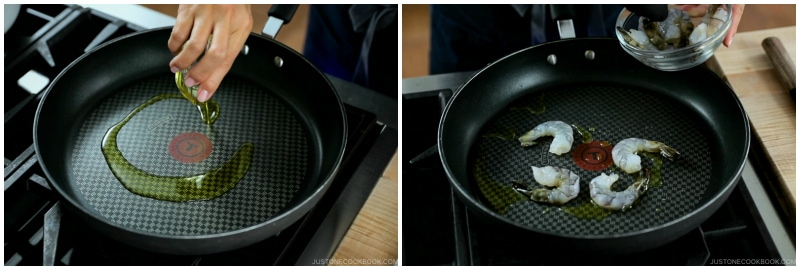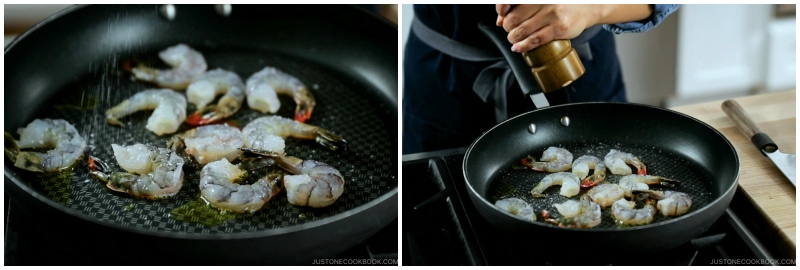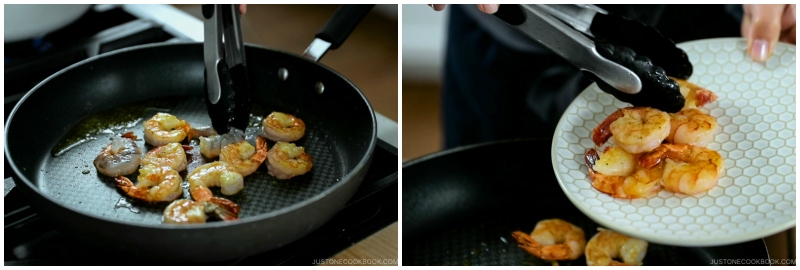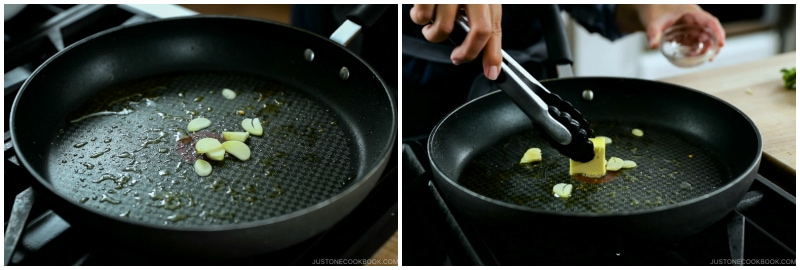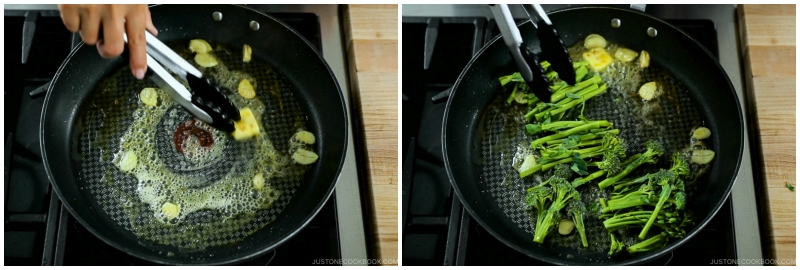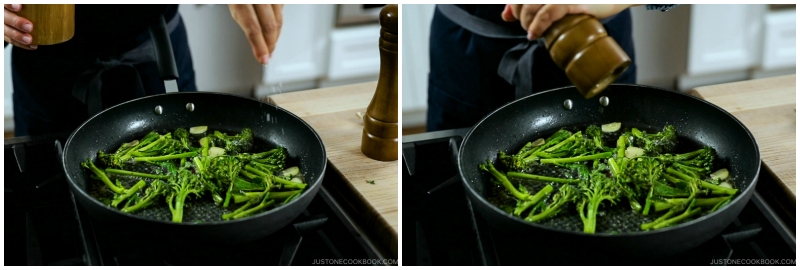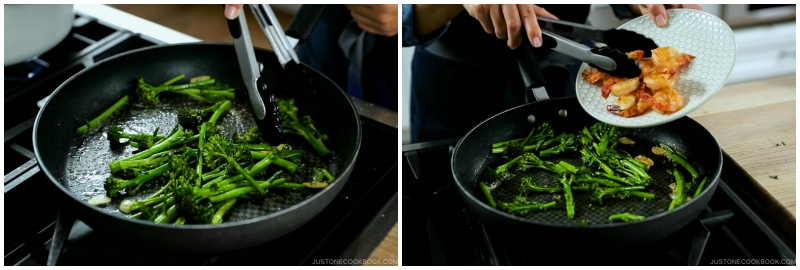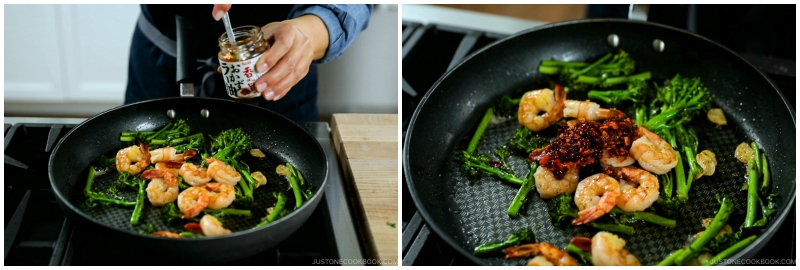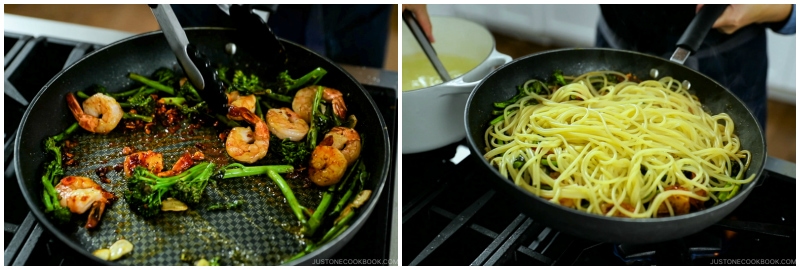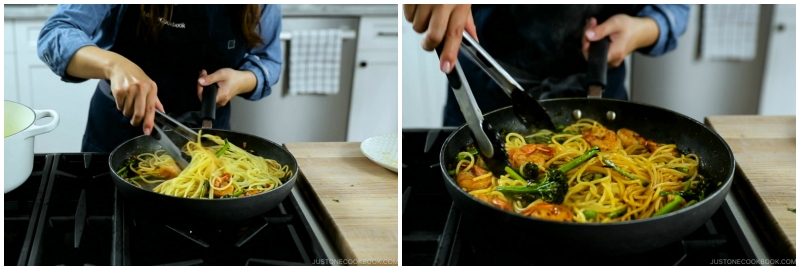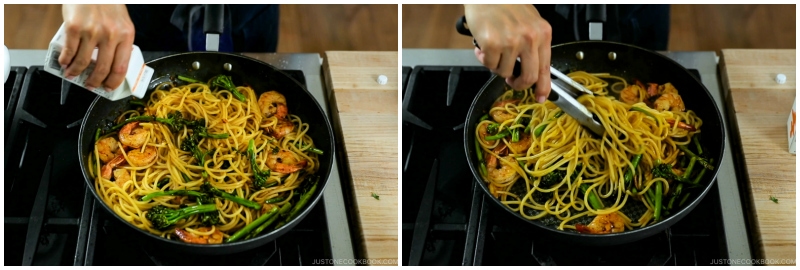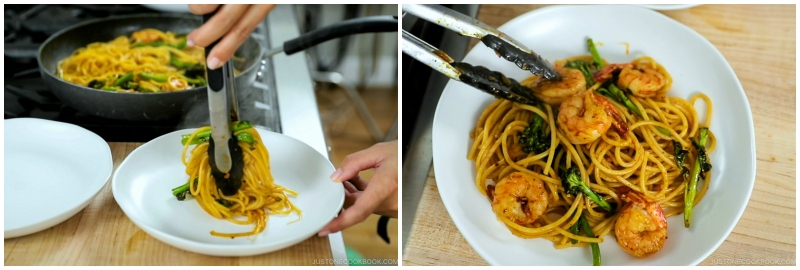My friends and readers often ask what I usually cook when I am too busy, or when I’m too lazy to shop for fresh ingredients. Can you guess? It’s Japanese-style pasta! I’ve been making various Japanese-style pasta recipes since my college days. I always keep abundant spaghetti in my pantry for a quick meal. I’m excited to show you how to make my family’s latest favorite, Japanese-style Shrimp and Broccolini Pasta (海老とブロッコリーニの和風パスタ)!
What’s Japanese-style Pasta?
Is this your first time hearing about Japanese-style pasta? I’m glad that you discovered it today. We call Japanese-style pasta Wafu Pasta (和風パスタ)—a pasta dish that has Japanese seasonings and/or Japanese ingredients. While wafu pasta may sound like a recent fusion creation, it has been around for a long time in the history of Japanese cuisine. A typical wafu pasta is seasoned with soy sauce, miso, and dashi, or cooked together with Japanese ingredients such as umeboshi Japanese plums, nori seaweed, spicy cod roe (mentaiko), and so on. This recipe features broccolini, a hybrid vegetable of broccoli and Chinese broccoli. It has smaller florets and longer, thinner stalks, making it a delicious addition to stir-fries and pasta dishes. I love cooking with broccolini when it’s in season! Look for it at your farmers’ market in late spring and early summer!
Why You’ll Love This Recipe
Now that I’ve piqued your interest, let me tell you why you MUST make this Japanese-style broccolini pasta recipe!
Super easy! Did I mention the 15-minute cooking time already? Pantry ingredients, flexible/adaptable ingredients. Delicious, flavorful, and incredibly hearty!
Ingredients for This Recipe
What makes this dish Japanese-style? It’s the use of dashi soy sauce (dashi joyu; the mix of dashi and soy sauce) and garlic chili oil. This unique combination delivers the umami punch that Japanese food is known for. With all these flavors, you’ll be proud to serve this delicious and easy recipe at home.
Spaghetti Extra virgin olive oil Butter Garlic Shrimp – They must be defrosted if frozen, shelled, and deveined. You can substitute them with any other protein you like. Broccolini – Alternatively, use regular broccoli, asparagus, green peas, or spinach. The choices are endless! Garlic chili oil – Read below for more info and substitute. Dashi soy sauce – Read below for more info and substitute.
Vegetarian? You can sub the shrimp with mushroom, or leave out the shrimp and top the pasta with a fried egg (for added protein)!
How to Make Japanese-style Shrimp and Broccolini Pasta
The video shows you how EASY and QUICK this pasta recipe is. To summarize, here are the 3 simple steps. Please read the detailed instructions in the recipe card below.
Cooking Tips
Cook pasta al dente. As a general rule, 1 to 2 minutes less than what the package instructions say is usually the sweet spot for perfectly al dente pasta. Do not overcook the pasta as we toss it with other ingredients in the frying pan after boiling.
Salt the pasta-cooking water. Salting the water before you add the pasta is the best way to get evenly seasoned noodles. When do we add salt? Wait to add salt until the water is boiling so it dissolves faster.
Don’t overcook the shrimp. When overcooked, shrimp will be rubbery while undercooked shrimp will be mushy and translucent. When shrimp are cooked through, they turn opaque.
Season to taste. Make sure to taste the dish before you finish cooking. You can always start under-seasoning, then adjust to your taste at the end. Feel free to top it with shaved Parmesan cheese (or Pecorino)!
How to Store
To Refrigerate: Once the pasta is cooled to room temperature, refrigerate immediately in an airtight container and store it for up to 3-4 days. To Freeze: Freeze the leftovers in an airtight container for up to 3 months. Reheat directly from frozen. Defrost in the refrigerator overnight before reheating. To Reheat. For the best results, thaw the pasta overnight in the refrigerator and reheat leftover in the microwave or in the frying pan.
Other Japanese-style Pasta Recipes
Creamy Mushroom and Bacon Pasta Classic Mentaiko Pasta Ume Shiso Pasta
Wish to learn more about Japanese cooking? Sign up for our free newsletter to receive cooking tips & recipe updates! And stay in touch with me on Facebook, Pinterest, YouTube, and Instagram. Editor’s Note: This post was originally published on March 23, 2020. It was republished with more helpful information on April 8, 2024.
